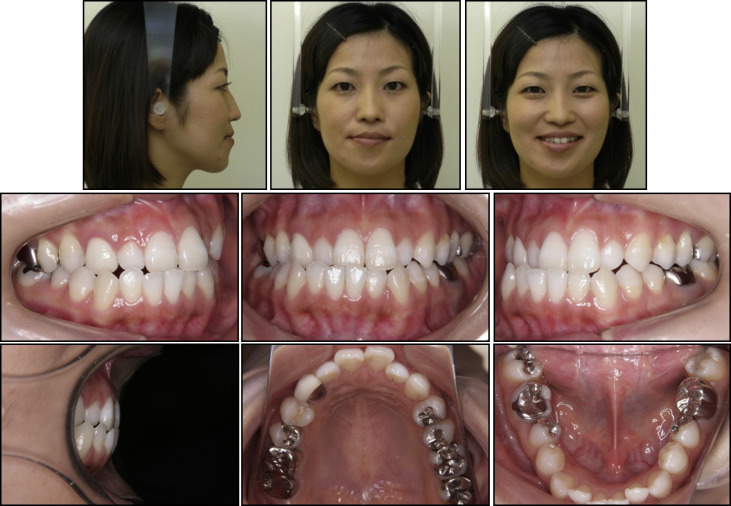We successfully treated a 32-year-old woman who had facial asymmetry and unilateral mandibular condylar osteochondroma using ipsilateral mandibular condylectomy and contralateral ramus osteotomy. Mirror image analysis with a noncontact 3-dimensional image scanner showed that the soft tissue on the deviated side was protruded more than 5.50 mm compared with the nondeviated side. The patient was diagnosed as having facial asymmetry with a skeletal Class III jaw-base relationship caused by unilateral mandibular condylar osteochondroma. After 18 months of preoperative orthodontic treatment, an ipsilateral condylectomy and a contralateral sagittal split ramus osteotomy were performed. As the result of postoperative orthodontic treatment for 20 months, an ideal occlusion with a Class I molar relationship and an adequate interincisal relationship was achieved. Facial asymmetry and mandibular protrusion were dramatically improved, and the total differences between the deviated and nondeviated sides were decreased to less than 1.11 mm. The acceptable occlusion and the symmetric face were maintained throughout the 1-year retention period. Our results indicated stability after condylectomy without condylar reconstruction in a patient with unilateral condylar osteochondroma.
Highlights
- •
Unilateral mandibular condylar osteochondroma was treated with mandibular condylectomy.
- •
38 months of active treatment and orthognathic surgery produced ideal occlusion.
- •
Facial asymmetry and mandibular protrusion were dramatically improved.
- •
Differences between deviated and nondeviated sides decreased to less than 1.11 mm.
- •
Acceptable occlusion and a symmetric face were maintained at 1-year retention period.
Facial asymmetry, commonly observed in orthodontic patients, causes both functional and esthetic problems. It is still difficult to determine the etiology in most patients with facial asymmetry; the etiology includes congenital disorders, acquired diseases, and traumatic and developmental deformities. In particular, condylar hyperplasia or hypoplasia, ankylosis of the temporomandibular joint (TMJ), displaced condylar fractures, and hemifacial microsomia could be causes of facial asymmetry.
Osteochondroma, a common benign tumor of bone, is rare in the craniofacial region, and the most common sites of occurrence are the coronoid process and the mandibular condyle. The growth of an osteochondroma in the craniofacial region usually is slow, causing morphologic and functional disturbances, leading to TMJ dysfunction, malocclusion, and facial deformities. The secondary condylar hypertrophy enlarges the mandibular condyle, resulting in worsening of a dentofacial deformity such as mandibular prognathism if the condylar hypertrophy occurs bilaterally, and also facial asymmetry if it is unilateral.
A mandibular condylar osteochondroma has been traditionally treated with condylectomy with or without condylar reconstruction. Recently, several comprehensive protocols have been developed and published to establish harmony and balance among function, esthetics, and occlusion ; however, little research is available to quantify facial asymmetry in patients with unilateral osteochondroma through orthodontic-orthognathic treatment.
The purpose of this article is to present an adult with facial asymmetry involving unilateral mandibular condylar osteochondroma treated with ipsilateral condylectomy and contralateral ramus osteotomy.
Diagnosis and etiology
A woman, 32 years 1 month old, had a chief complaint of facial asymmetry. She had mandibular deviation to the right ( Fig 1 ), with onset around the age of 22 years. During the meantime, she had no pain and discomfort at the left TMJ and was conscious of slow but progressive worsening of her facial asymmetry. She was diagnosed as having mandibular condylar osteochondroma at Nihon University Hospital at Matsudo in Japan. Her facial profile was straight with a slight protrusion of the lower lip. In smiling, the right corner of her mouth was lower than the left one.





